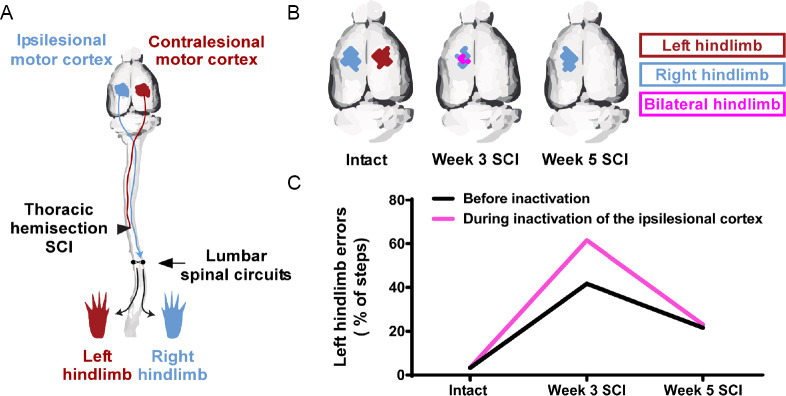Figure 1.
Motor cortex plasticity is involved in spontaneous locomotor recovery after spinal cord injury (SCI).
(A) Thoracic hemisection SCI on the left side in the rat severs the crossed corticospinal tract from the contralesional motor cortex to the left hindlimb, but spares the crossed corticospinal projection from the ipsilesional motor cortex to the right hindlimb. The lumbosacral spinal circuits are located below the lesion. (B) In the intact state, intracortical microstimulation of either motor cortex elicits movement in the contralateral hindlimb. After SCI, stimulation of the contralesional motor cortex no longer elicits hindlimb movement for up to 5 weeks. Three weeks after SCI, stimulation of the ipsilesional motor cortex, that retains access to lumbosacral spinal circuits, elicits movement in both hindlimbs. This time point coincides with significant locomotor recovery of the affected (left) hindlimb (Brown and Martinez, 2018). Five weeks after SCI, stimulation of the ipsilesional motor cortex no longer elicits bilateral hindlimb movements. (C) Reversible inactivation of the ipsilesional motor cortex during skilled locomotion on a horizontal rung-ladder 3 weeks after SCI reinstated deficits in the affected hindlimb, but not in the intact state or 5 weeks after SCI. These findings indicate that after SCI, the ipsilesional motor cortex spontaneously gains a novel functional access to the affected hindlimb during the motor recovery process. Data presented are from a representational rat (Brown and Martinez, 2018).

